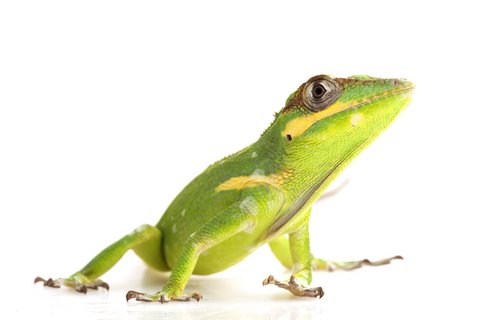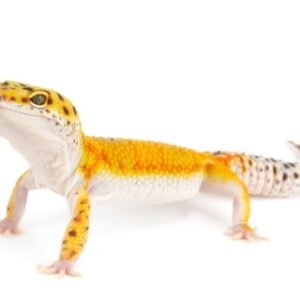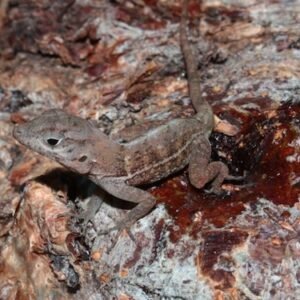Understanding the Cuban Knight Anole
The Cuban Knight Anole, scientifically known as Anolis equestris, is a fascinating lizard species native to the lush tropical environments of Cuba and the Bahamas. This species is particularly recognized for its vibrant green coloration, which serves not only as camouflage within its natural habitat but also as an indicator of health and vitality. Adult anoles typically exhibit a robust body and can grow to be quite sizeable, with some individuals reaching lengths of 20 inches, including the tail. Their distinctive physical traits include a pronounced dewlap, which males display during territorial displays and courtship rituals, setting them apart from other lizard species.
Behaviorally, the Cuban Knight Anole is arboreal, meaning it spends the majority of its time in trees. This remarkable adaptation allows it to utilize its impressive climbing abilities, making the most of its grasping toes and long limbs. They are primarily diurnal, preferring to be active during daytime hours, where they indulge in sunbathing and foraging for food. In the wild, their diet consists of a variety of insects, such as crickets and roaches, and occasionally smaller lizards. Understanding these dietary habits is essential for pet owners, as replicating this balanced diet significantly contributes to the health and well-being of an anole in captivity.
Socially, Cuban Knight Anoles exhibit a range of behaviors. While usually solitary, males can be territorial and will engage in displays of aggression if their space is invaded. Understanding these social dynamics is critical for owners who wish to house multiple anoles, as proper space and environmental factors play a significant role in promoting harmony. Ultimately, comprehending the Cuban Knight Anole’s unique traits, behavior, and natural habitat is fundamental for providing appropriate care, ensuring they thrive as beloved companions in a domestic setting.
Setting Up the Perfect Habitat for Your Anole
Creating a suitable habitat for your Cuban Knight Anole is crucial for its health and well-being. The ideal terrarium size for a single anole should be at least 20 gallons, with a minimum dimension of 30 inches in height. This space allows the anole to exercise its natural climbing instincts, which are essential for its physical and mental health. In addition to ample vertical space, it is recommended to use a substrate that retains humidity while allowing drainage, such as a mixture of coconut fiber and sphagnum moss. This combination helps create a natural environment that mimics the anole’s native tropical habitat.
Temperature regulation is vital, as Cuban Knight Anoles thrive in a warm environment. The basking area should maintain temperatures between 85°F and 90°F, while the cooler end of the terrarium should range from 75°F to 80°F. Utilizing a heat lamp during the day to provide basking spots is highly recommended. To ensure proper humidity levels, aim for a range of 60% to 70%. Regular misting of the enclosure can help achieve this, alongside a hygrometer to monitor humidity accurately.
Lighting plays a significant role in the health of your anole. Providing UVB lighting for at least 10 to 12 hours daily will promote Vitamin D synthesis, aiding in calcium absorption and overall metabolic health. It is important to use a high-quality UVB light suited for reptiles to mimic sunlight exposure.
Decorations are essential not only for aesthetics but also to enrich your pet’s environment. Incorporating branches, vines, and live plants such as pothos or bromeliads will create a stimulating habitat. Additionally, providing hiding spaces using caves or leaf litter allows your anole to feel secure while encouraging natural behavior. Overall, a well-decorated and properly maintained habitat will significantly enhance the quality of life for your Cuban Knight Anole.





